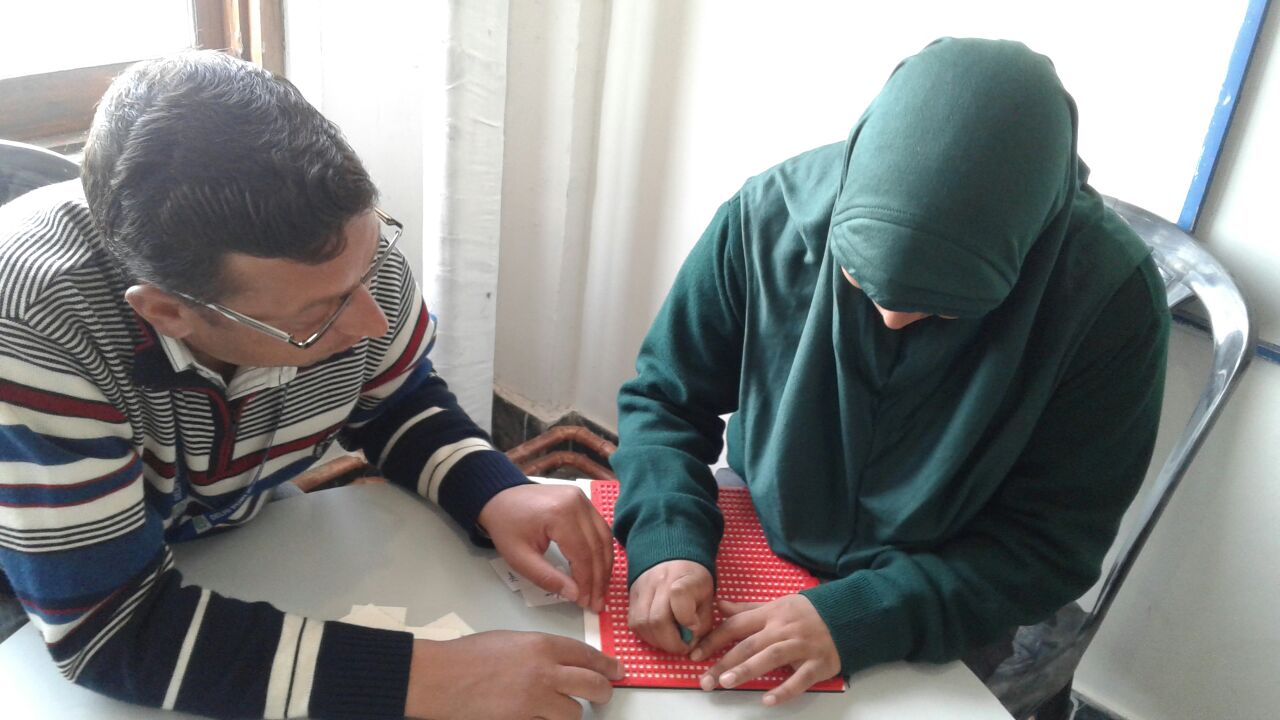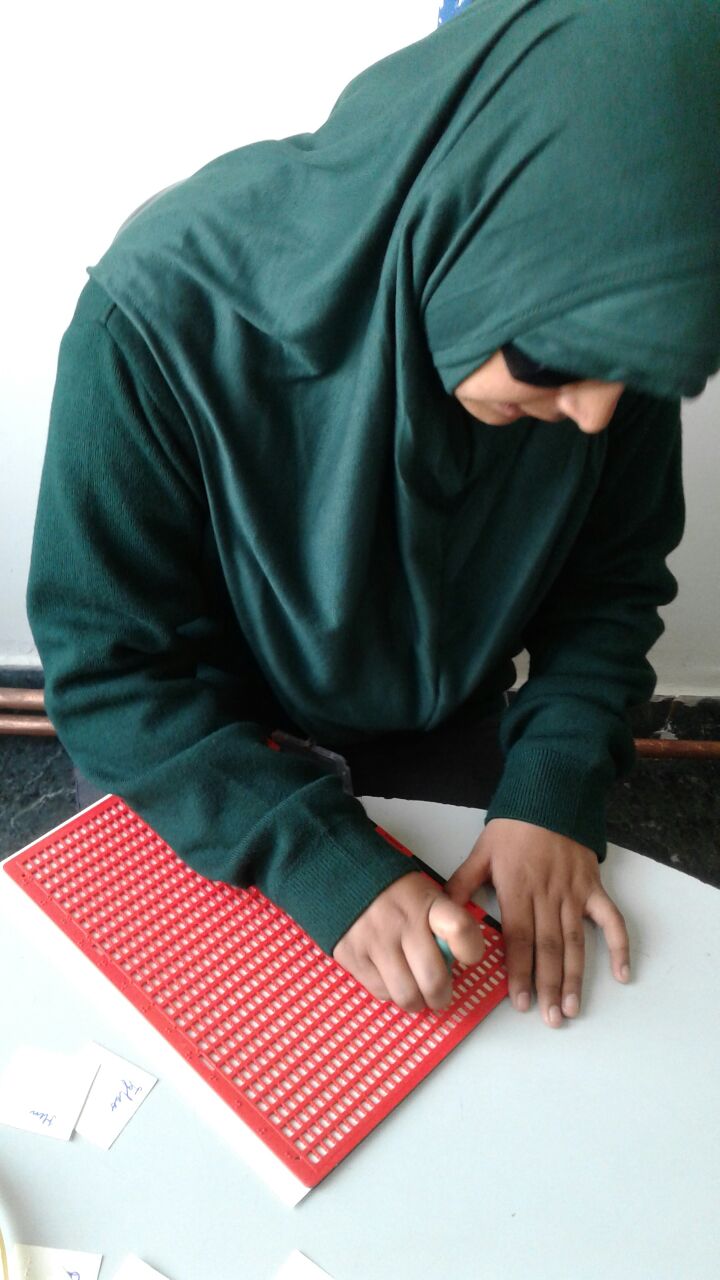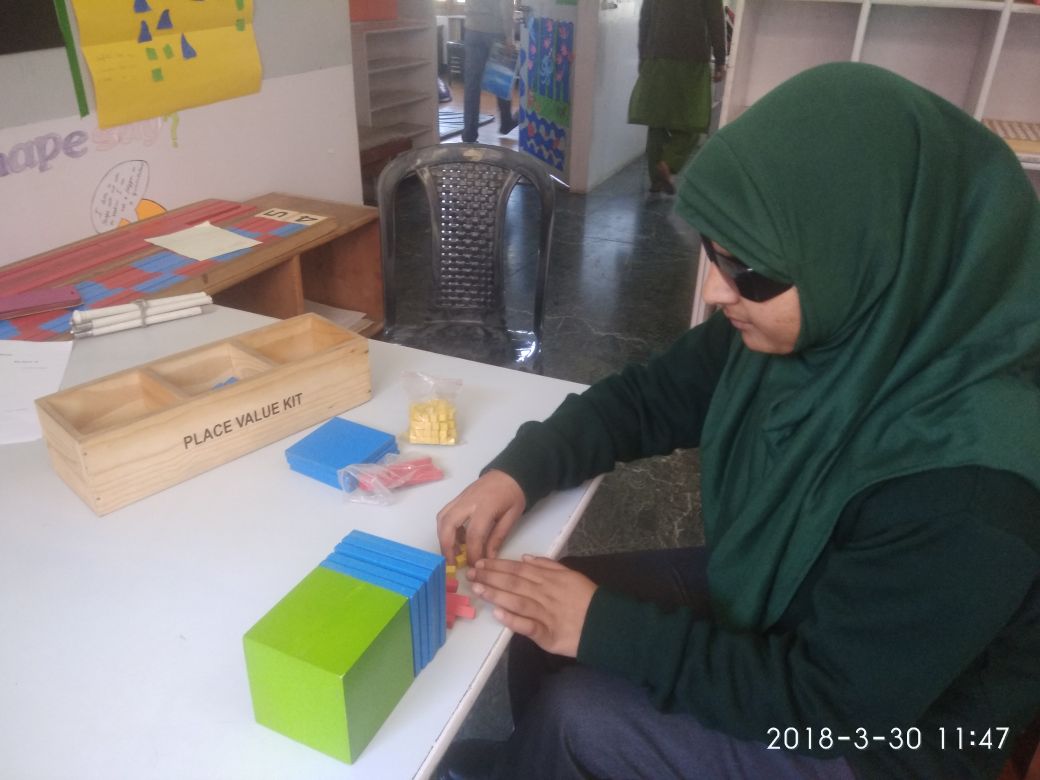
Working with Visually Impaired Students
Over the years, studies in child development sociology and special education has led educators to the conclusion that visually impaired children grow, flourish and achieve greater self and social fulfilment by being nurtured in the least restrictive environments. Through experienced specialists in education of the visual impairment, these children enjoy common experiences, essential to the development of a keen awareness of the realities of the world around them.
The case of a visually impaired child – Insha Mushtaq Wani, is an example. She joined SEN on 21st March 2018 for a six months’ basic course that includes Braille training. Braille is a system of communication for the blind or who have severe vision difficulties The Braille alphabet is formed from a Braille cell. A Braille cell is a group of six raised dots that represent letters and numbers. Besides Braille, the course includes general English skills, general Mathematical skills and Basic Non Visual Desktop Access (NVDA). NVDA is a screen reader which enables visually impaired people to use computer. It reads a text or screen in a computerized voice.
Another activity undertaken is place value. The focus of this activity was to make the subject undertake simple logical addition and subtraction, and other learning number names.
Braille practice also includes braille flash cards. Flash cards help visually impaired students to recognize alphabets and numbers.





